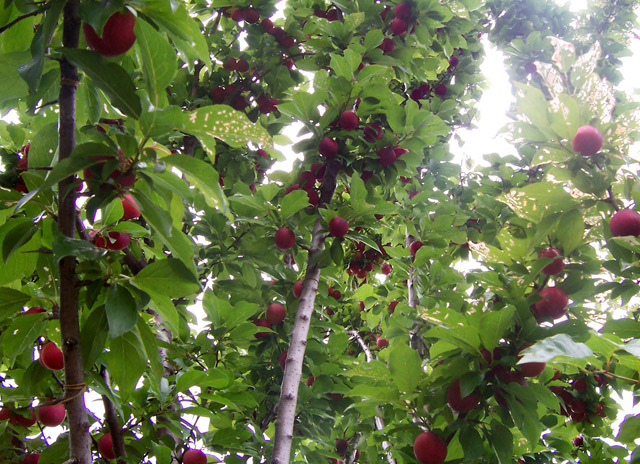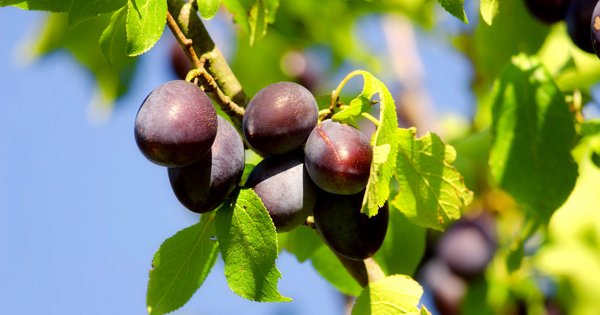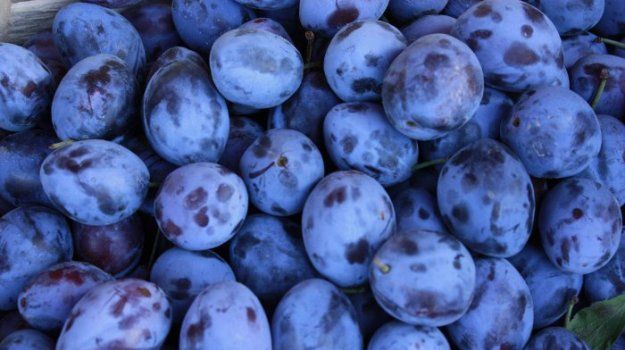How to process plums: tips from gardeners
Content
Fruit mites
Reproduction of fruit mites falls in the summer months. There are many varieties of these micro-insects in nature, but red mites are most often affected by plums. They give from 4 to 8 generations per season. Each female is capable of laying up to 100 eggs. Eggs should be found on the inside of the leaf veins. For the winter, ticks lay eggs on the bark. Therefore, in winter, red masonry can be seen on the trees. These insects suck the sap from the leaves. Fruits also suffer from fluid loss. They become lethargic and shallow.
To combat adults, special preparations of insectocaricides are used. Processing is carried out with Danadim, Fufanon, Fitoverm. These funds must be used at the time of the greatest birth of the larvae. If the infection is quite serious, pay attention to the preparations Sunmayt, Nissoran, Apollo, Omayt. Pyrethroids are not used to combat red ticks. To prevent attacks of fruit mites, it is important to carry out the procedure for removing the old bark and spring whitewashing.
Pollinated aphid
These little green insects can give you a lot of trouble and rob your plums. Aphid eggs hibernate on a tree. In the spring, the founders appear from them, who are engaged in reproduction and breeding of the colony. Aphids often parasitize on leaves, but they can also get to fruits. Aphids give a double blow to the plum. Insects suck life-giving juices, and leave behind sugary secretions, which form a favorable environment for the development of fungi.
Any treatments aimed at controlling pollinated aphids are important to carry out in early spring, before flowers and buds begin to bloom on the trees. For this, a 2% nitrafen emulsion or 1% DNOC solution is suitable. If necessary, repeated treatments, after budding, the crown is sprayed with DDT oil emulsion, and after flowering, you can use Karbofos.
Moths
The moth is a brown butterfly that lays eggs with caterpillars on plums. The larvae feed on buds and leaves. With a massive infection, the tree can be severely damaged. Since caterpillars pupate in the ground or in the thickness of fallen leaves, the main method of dealing with them is to dig up the near-trunk zones in the spring and harvest dry carrion in the fall. Chemical insecticides are used for mass colonization of caterpillars on branches. If there are more than 4-5 of them per 1 meter of the branch, then the time has come for radical measures.
Video "Spraying with urea"
Moths
Moths are considered one of the most common plum pests. The larvae of these gray-brown butterflies pose the greatest danger to gardeners. When the worms emerge from the eggs, they rush to the fruit and settle inside them. If the bone is not yet ripe, then the larvae get to the very core. If it has already hardened, then the parasites eat away the flesh around it. In this case, the voids are filled with pest excrement. You can understand that an uninvited guest has appeared inside the plum by a small hole with a cobweb.
Most of the measures to combat these parasites are preventive in nature.It is important to remove the old bark from the trees in time and allow the fallen leaves to collect around the trunk. You also need to carry out the autumn digging and pruning of shoots. During the fruiting period, it is necessary to regularly collect volunteers. If the moth did appear on your site, you should pay attention to professional insecticides. Processing is carried out in the spring with the help of Karbofos and Aktelika.
Tolstoy
Most of all, this insect is widespread in the forest-steppe zones of Russia. Mature thickfoots begin their pernicious activity in the spring, about a week after the flowering of the plums.
Females lay one egg for each ovary of the fetus. The larva hatch after about 3 weeks and gnaw a tunnel right inside the still soft bone. Adult larvae grow up to 6 millimeters in length and completely incinerate the bone from the inside. Such a fruit loses its vitality and falls off prematurely. It becomes impossible to eat it.
The most common and safest method of control is the burying of affected fruits. Plums with worms are collected and buried in the ground to a depth of more than 10 centimeters. In such conditions, the larvae cannot pupate and get out. The above insecticides are used in cases where the damage to the tree is more than 10%.
Video "Spraying trees in spring"
What to do to keep the trees in the garden healthy and fruitful? The following video will help protect them from pests.



